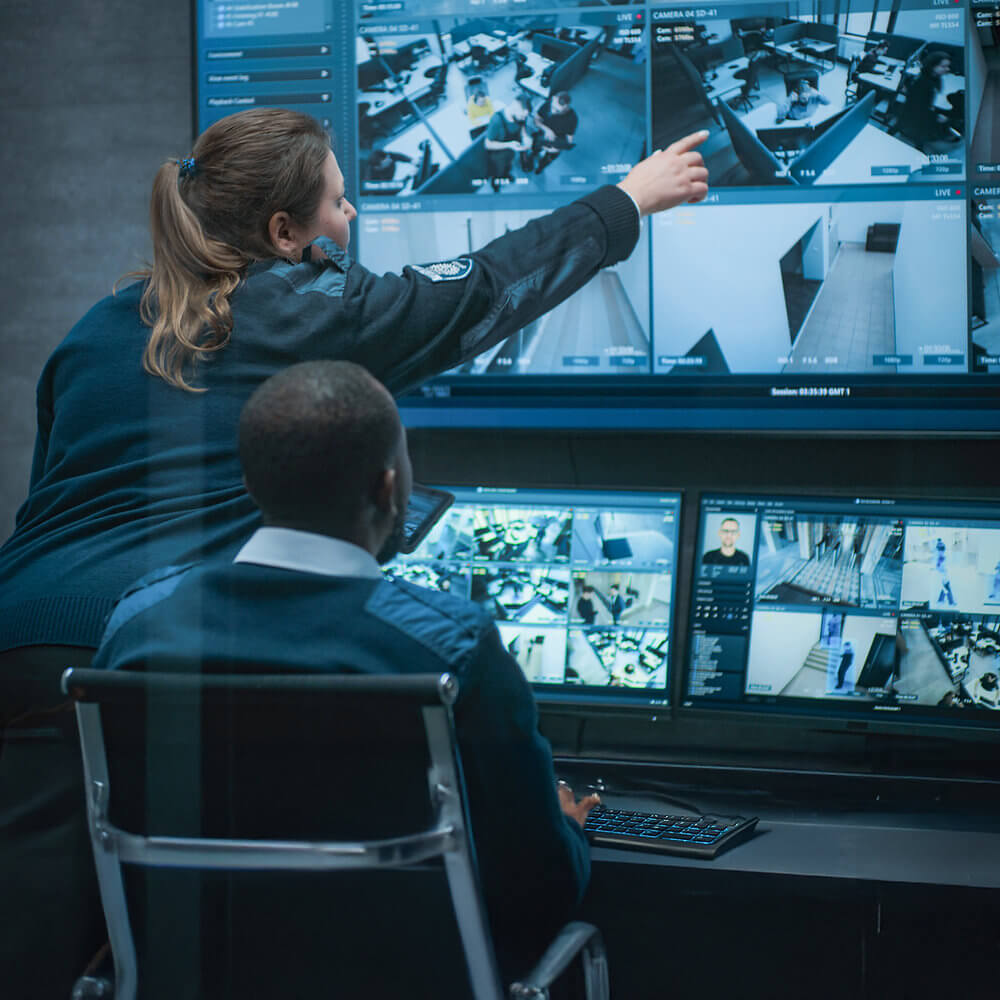
How Artificial Intelligence is Reshaping the Future of Security
The Security Industry at a Crossroads: From Physical to Intelligent Systems
Security is no longer just about gates, guards, and cameras. Artificial Intelligence (AI) and adjacent technologies—such as automation, robotics, and edge computing—are rapidly pushing the industry toward a new era of intelligent security.
Today’s security solutions go beyond deterrence. AI enables real-time threat detection, proactive risk mitigation, and dynamic situational awareness. Whether through smart surveillance systems, AI-assisted investigations, or interoperable platforms across agencies, AI is becoming the operational backbone of modern security.
AI and Emerging Technologies: Catalysts for Transformation
AI is not just enhancing the security industry, it’s redefining it. Security teams are integrating AI into:
- Surveillance systems that can identify anomalous behavior in real time.
- Access control systems that adapt using facial recognition, voice authentication, or behavioral biometrics.
- Threat detection platforms that use predictive analytics to anticipate and neutralize risks before they occur.
Emerging technologies like IoT, augmented reality, and robotics are also contributing to this shift, creating multi-dimensional security environments. The convergence of these tools through edge computing, where data is processed at the device level rather than in the cloud, ensures faster response times in high-stakes scenarios.
Redefining the Security Workforce
As AI transforms the technology landscape, it’s also reshaping the workforce.
A Shift in Required Skills
Traditional security roles are evolving to require:
- Technological literacy
- Creative and analytical thinking
- Resilience and adaptability
- Digital collaboration skills
Security organizations are now valuing skills over credentials, opening doors to gig workers, immigrants, veterans, and older professionals who bring relevant experience, even without a four-year degree.
Upskilling for the AI Era
To remain competitive, security professionals must continuously upskill. This includes learning how to operate AI-assisted tools, interpret predictive data, and collaborate with machine-based systems that augment decision-making processes.
Human-Machine Collaboration and Organizational Design
Modern security operations require synergy between humans and machines. Leaders must embrace hybrid organizational models that:
- Equip teams with digital collaboration tools
- Restructure roles for human-AI integration
- Prepare leadership to navigate AI-augmented environments
Platforms like Kaseware enable this shift by automating business rules (e.g., “if-this-then-that” logic), allowing operators to focus on higher-order tasks while AI handles workflows, triage, and early alerting.
Embedding Values: AI, ESG, and Purpose
Today’s professionals want more than a paycheck, they want purpose. Security firms are increasingly expected to demonstrate:
- Strong ESG (“Environmental Social Governance”) commitments
- Transparent AI ethics and data usage policies
- A mission-driven culture rooted in social impact
AI must support (not replace) human decision-making. This means organizations need clear governance policies, ethical use standards, and safeguards that prioritize equity and civil liberties.
At Kaseware, ethical AI deployment is central to our mission. Our AI tools are designed to support analysts and investigators, not supersede them, ensuring transparency, accountability, and privacy remain at the forefront.
Key Drivers of AI Adoption in Security
AI’s growth in the security sector is not incidental. It’s being driven by clear operational and strategic imperatives:
- Regulatory Compliance: From NERC CIP in the energy sector to CJIS standards for law enforcement, AI can streamline compliance by enabling real-time monitoring, automated reporting, and audit readiness.
- Operational Efficiency: AI automates repetitive tasks, reduces human error, and helps scale investigations across jurisdictions.
- Cost Optimization: AI tools lower the long-term costs of security operations by improving resource allocation and reducing downtime.
- Data Complexity and Connectivity: With data flowing from IoT sensors, social media, surveillance, and field reports, AI helps centralize and analyze diverse data sources.
- Cloud Adoption and AI Synergy: Cloud-based AI tools enable agencies to operate securely, collaboratively, and with minimal infrastructure costs.
Common Challenges with AI Implementation
Despite its promise, AI adoption comes with hurdles:
- Lack of centralized strategy: Many organizations deploy AI in silos, leading to inconsistent results and integration issues.
- Ethical and regulatory risk: Without clear policies, AI can unintentionally violate privacy norms or exacerbate bias.
- Security of the AI itself: AI systems can become targets of adversarial attacks if not properly secured.
- Workforce readiness: AI can outpace the current skills of security teams, leading to underutilization or misuse.
Building a Holistic AI Strategy for Security
An effective AI strategy should incorporate the following elements:
- Cross-functional Collaboration: Involve IT, legal, HR, and security teams in developing AI policies and applications.
- Governance and Ethical Oversight: Define policies around fairness, transparency, accountability, and redress.
- Technology Integration: Ensure AI systems are interoperable with existing tools and platforms.
- Reskilling and Change Management: Provide ongoing training and create a culture that embraces digital transformation.
- Compliance and Legal Readiness: Align AI use with industry-specific regulations such as GDPR, CJIS, or NERC CIP.
How Kaseware Is Leading the AI Evolution in Security
Kaseware’s platform is purpose-built to help public safety agencies, corporate security teams, and fusion centers adopt AI with confidence and control.
AI Services in Action
Kaseware provides many AI-powered tools to support modern investigative workflows, such as:
- Vision: Uses computer vision to detect objects and actions in visual media.
- OCR: Enhanced optical character recognition supports multiple languages and handwritten notes.
- Speech-to-Text: Seamlessly transcribes interviews and surveillance audio for use in reports.
- Entity Extraction: Automatically identifies people, locations, and organizations in case files.
- Language Translation: Enables real-time translation across 125+ languages to support multilingual investigations.
These tools reduce workload, accelerate insights, and improve accuracy—critical in environments where every second counts.
Use Case: Fusion Center Network
Kaseware supports 30% of U.S. fusion centers with interoperable, AI-enabled platforms that allow them to share intelligence, automate threat triage, and respond to crises in real time.
Whether it’s human trafficking investigations or counterterrorism assessments, our platform supports secure collaboration, fast documentation, and custom workflows tailored to local, state, and federal priorities. Read our case study to learn more.
AI Is the Future—But Only If Done Right
The security industry is moving toward an intelligence-driven future. AI is not a luxury, it’s a necessity for scaling operations, protecting communities, and responding to increasingly complex threats.
But as we embrace these tools, the focus must remain on ethical deployment, human-machine collaboration, and a values-driven approach.
Kaseware stands at the intersection of innovation and integrity, equipping organizations with AI solutions that are not only powerful, but principled.
Ready to Build Smarter, Safer Operations?
Schedule a personalized demo to see how Kaseware’s AI-powered investigative platform can support your mission. Whether you’re protecting critical infrastructure, responding to insider threats, or modernizing your agency’s operations—our tools are designed to adapt with you.








